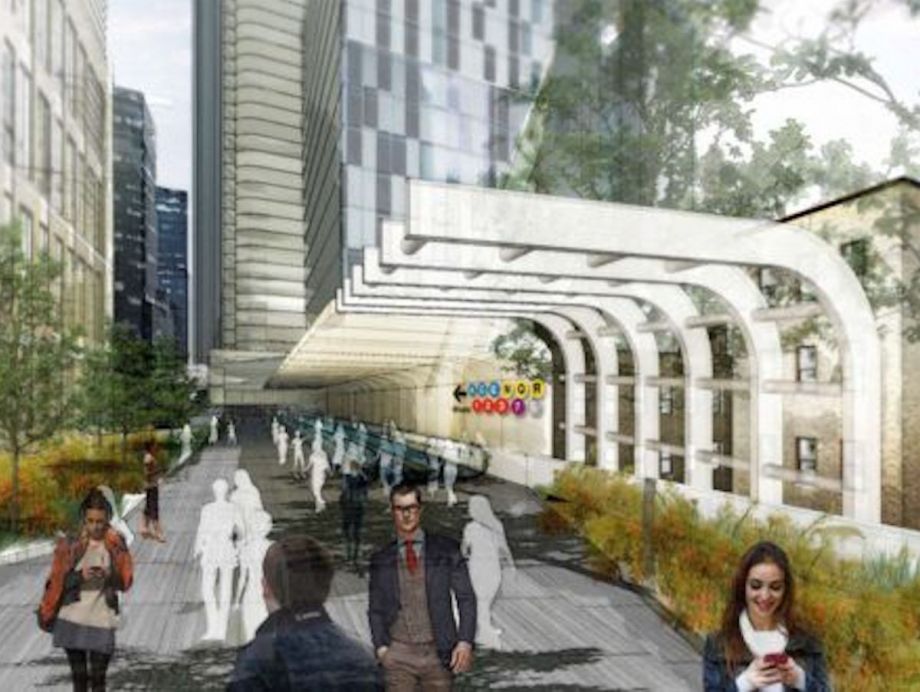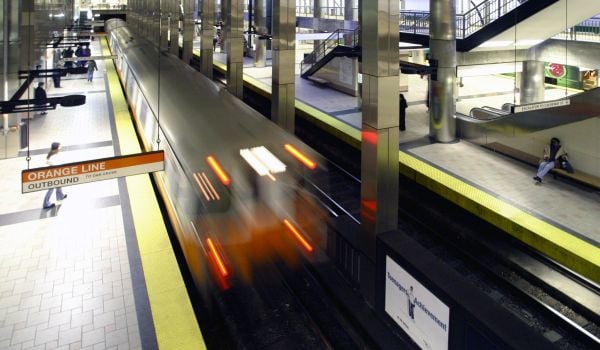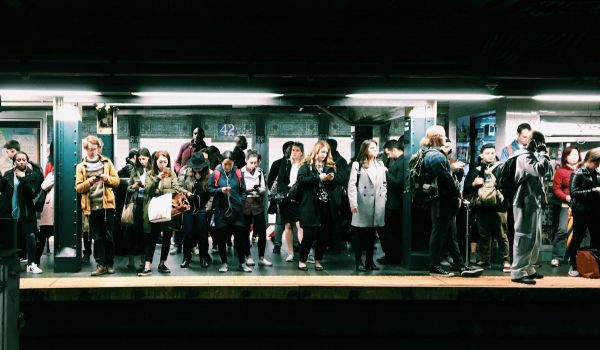Five finalists were announced in September 2016 in a design competition that asked participants to reimagine New York City’s Port Authority Bus Terminal (PABT). The competitors pulled no punches: The new bus station would have landscaped gardens, vaulted glass ceilings and Calatrava-esque passageways in gleaming iPhone white.
Except that it wouldn’t. While the concepts “may inform the planning process,” the authority quickly clarified, they were merely small parts of “a larger universe of planning options.”
That larger universe has begun to crystalize. In August, the Regional Planning Association (RPA) suggested keeping the current terminal and adding a satellite hub beneath the Javits Center convention hall, which is a few blocks west of PABT. The approach is modeled on the least flashy of the five final designs. Then, two weeks ago, the Port Authority of New York and New Jersey made its own announcement. Its feasibility studies had also revealed that a new bus terminal might not be necessary — they could simply stack two more floors on top of the current station instead. “If it turns out to be the most viable alternative, we’ll have no problem getting behind it,” said New Jersey State Senator Loretta Weinberg of the proposal to pile a couple more stories onto the existing eyesore.
Compare this cold-logic talk to the emotionally charged debate about what to do with Penn Station, New York’s other maligned 20th-century transit hub. The Port Authority Bus Terminal and Penn Station are similar beasts in many ways: They’re dingy, disorienting, congested and in dire need of expansion. Rush hour ridership at Penn Station doubled between 1990 and 2010. And the number of buses passing through the Lincoln Tunnel, which connects New Jersey to Manhattan, at peak hour climbed from 700 in 1980 to 1,000 today.
Yet the rhetoric that surrounds the two facilities’ respective expansion plans is very different. Aside from the brief (and disavowed) spectacle of its flashy redesign contest, the Port Authority’s discussion of a re-do has emphasized capacity, siting and integration. The Penn Station debate has been driven by calls to restore an iconic gateway “worthy of New York.” That has left transit advocates dismayed that Penn Station’s brass-tacks needs — first and foremost, more track capacity — are being forgotten amid reveries about train travel grandeur.
No one is demanding that the Port Authority be rebuilt as a monument to bus travel, or as a New York landmark to awe and uplift — and that may be its best asset. The proposal to add an additional two stories (and then renovate the floors below) would add capacity quickly while allowing the terminal to remain operational during construction. This plan would also keep the station where it is, with its dozen subway line connections, and circumvent the costs and litigation that come with seizing properties by eminent domain.
Similarly, a subterranean Javits bus station would free up 63 gates in the PABT, boosting commuter bus capacity by nearly 30 percent. This would allow the current terminal to keep up with demand until 2040, while providing a new transit option to Manhattan’s freshly upzoned far west side. RPA President Tom Wright predicts the Javits Center buildout would cost $3 billion — a huge sum, but far less than the Port Authority’s estimate of up to $10 billion for a whole new terminal to replace PABT. The convention hall’s lower level also happens to be dimensionally appropriate for a bus station, and is sited almost directly over the Lincoln Tunnel to New Jersey.
Penn Station’s expansion is shaping up differently. In June, a plan was approved to turn the Farley Post Office Building across the street into an extension of the current cramped terminal. It will include a massive 255,000-square-foot passenger hall beneath a 92-foot-high glass canopy that evokes the prestige of its predecessor, torn down in 1963. Plus, 700,000 square feet of retail and office space. What the $1.6 billion renovation won’t provide is additional track capacity, a fact passengers were grumbling about as soon as the first phase opened for business. “It’s beautiful, but I wish all this effort would translate into better train service,” one Long Island commuter told The New York Times.
Penn Station is a fraught topic. The original’s demolition galvanized the modern preservation movement. But the residue of its former glory could also be its curse. With up to 50 percent growth in transit ridership projected between 2010 and 2040 during the morning and evening rushes, the fixation on aesthetics is an unaffordable luxury. “There is historic justice in trying to rectify a crime committed a half-century ago,” wrote the Times in 2012 in an op-ed titled “Restore a Gateway to Dignity.” Four years later, the paper commissioned a high-end architecture firm to envision a majestic, “enobling entrance.” The Municipal Arts Society has dangled redesign renderings that resemble cost-prohibitive moon colonies.
Any attempt to improve the mass transit experience is a positive step, and Penn Station does need bigger, better-designed passenger spaces for purely functional purposes. Transit advocates acknowledge as much. “Now, don’t get me wrong: Penn Station is not a particularly pleasant train station for anyone, and it needs to be nicer,” wrote Benjamin Kabak on his blog, 2nd Ave. Sagas. “But redesigning Penn Station without addressing the trans-Hudson capacity concerns at the same time make me worry that we’re simply repeating the mistakes of the PATH World Trade Center station.”
The Port Authority Bus Terminal may escape this fate through sheer indifference. No one romanticizes bus depots (though believe it or not, the Port Authority was once a pretty stately place). Bus infrastructure is viewed as a mechanism for moving groups of people around (otherwise known as “transit”) not a representation of our highest ideals and a beacon of inspiration. The Port Authority expansion won’t be perfect, but at least it will be free from the burden of fetishization. Unlike the train station, a bus station doesn’t need to be magical, it just needs to work.

Will Doig was formerly Next City’s international editor. He's worked as a columnist at Salon, an editor at The Daily Beast, a lecturer at the New School, and a communications staffer at the Open Society Foundations. He is the author of High-Speed Empire: Chinese Expansion and the Future of Southeast Asia, published by Columbia Global Reports.
















